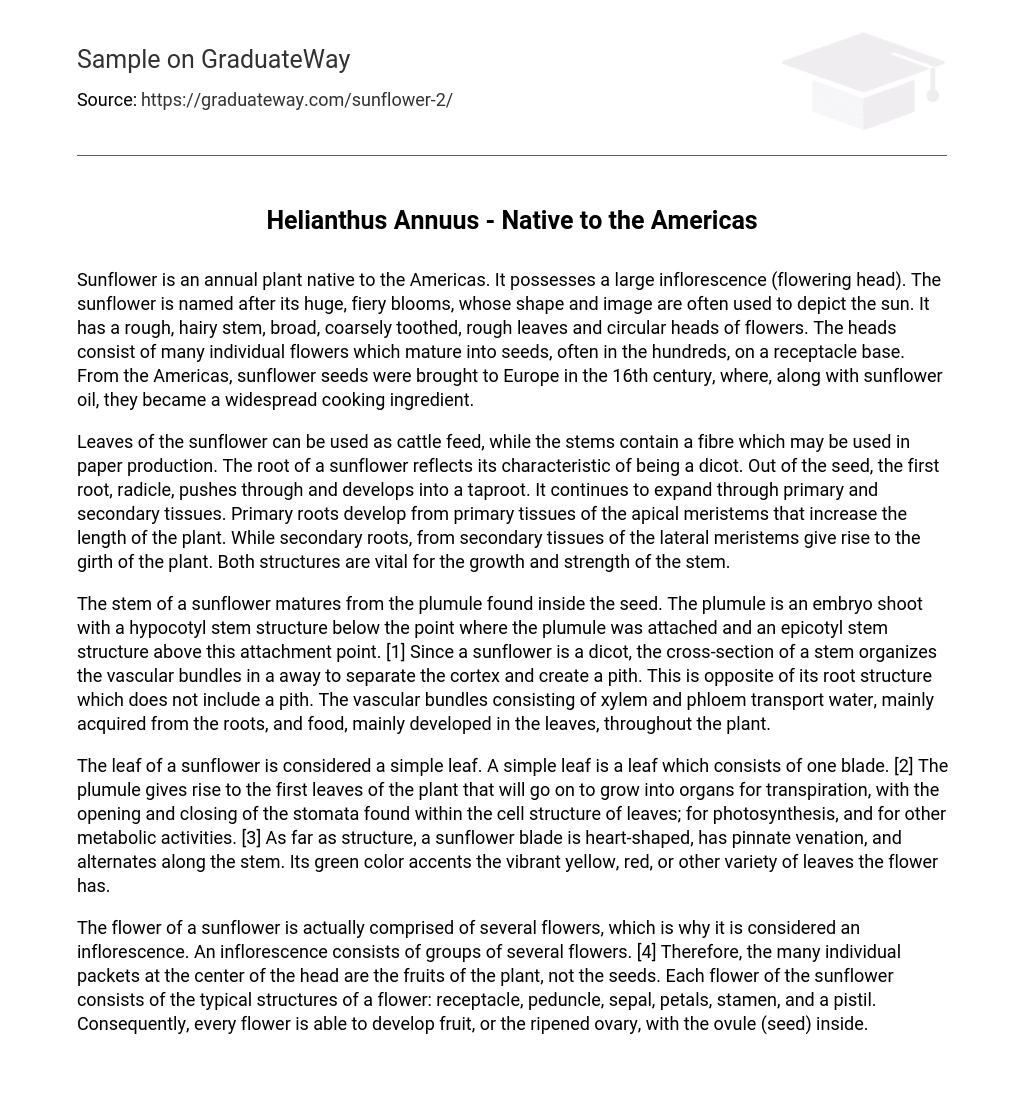Sunflower is an annual plant native to the Americas. It possesses a large inflorescence (flowering head). The sunflower is named after its huge, fiery blooms, whose shape and image are often used to depict the sun. It has a rough, hairy stem, broad, coarsely toothed, rough leaves and circular heads of flowers. The heads consist of many individual flowers which mature into seeds, often in the hundreds, on a receptacle base. From the Americas, sunflower seeds were brought to Europe in the 16th century, where, along with sunflower oil, they became a widespread cooking ingredient.
Leaves of the sunflower can be used as cattle feed, while the stems contain a fibre which may be used in paper production. The root of a sunflower reflects its characteristic of being a dicot. Out of the seed, the first root, radicle, pushes through and develops into a taproot. It continues to expand through primary and secondary tissues. Primary roots develop from primary tissues of the apical meristems that increase the length of the plant. While secondary roots, from secondary tissues of the lateral meristems give rise to the girth of the plant. Both structures are vital for the growth and strength of the stem.
The stem of a sunflower matures from the plumule found inside the seed. The plumule is an embryo shoot with a hypocotyl stem structure below the point where the plumule was attached and an epicotyl stem structure above this attachment point. [1] Since a sunflower is a dicot, the cross-section of a stem organizes the vascular bundles in a away to separate the cortex and create a pith. This is opposite of its root structure which does not include a pith. The vascular bundles consisting of xylem and phloem transport water, mainly acquired from the roots, and food, mainly developed in the leaves, throughout the plant.
The leaf of a sunflower is considered a simple leaf. A simple leaf is a leaf which consists of one blade. [2] The plumule gives rise to the first leaves of the plant that will go on to grow into organs for transpiration, with the opening and closing of the stomata found within the cell structure of leaves; for photosynthesis, and for other metabolic activities. [3] As far as structure, a sunflower blade is heart-shaped, has pinnate venation, and alternates along the stem. Its green color accents the vibrant yellow, red, or other variety of leaves the flower has.
The flower of a sunflower is actually comprised of several flowers, which is why it is considered an inflorescence. An inflorescence consists of groups of several flowers. [4] Therefore, the many individual packets at the center of the head are the fruits of the plant, not the seeds. Each flower of the sunflower consists of the typical structures of a flower: receptacle, peduncle, sepal, petals, stamen, and a pistil. Consequently, every flower is able to develop fruit, or the ripened ovary, with the ovule (seed) inside.





